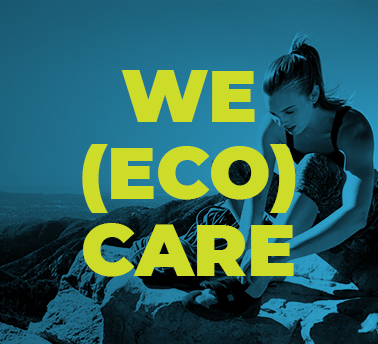The end of Greenwashing. Check out this story from WSA
Nilit
Head of global marketing at Nilit, the world’s biggest producer of nylon 6.6 yarns, Sagee Aran, is convinced his company has a contribution to make in helping the textile and garment industry lower its impact on the environment.
You have said Nilit’s nylon products have been constructed to address “the particular environmental challenges” that the textile and apparel industry faces. What are those challenges?
When we come to market with new technology, we have four pillars in mind and any new product we bring out will have to check at least one of these boxes. The first one asks if the product will contribute to waste reduction. The second relates to water preservation, by which we mean drinking water for communities. The third is wellbeing, by which we want to know if people will feel good if they wear a garment made from our yarns. For example, we have a product, Sensil Breeze, that has a cooling effect built into the core of the polymer, so it’s permanent. If 100 lawyers in a big office all wore a baselayer garment with this technology, the company could reduce its use of air conditioning because the effect would be that people would feel one degree cooler thanks to the baselayer. One degree may not sound like much, but if you multiply that by lots of buildings for ten hours a day, you save a lot of energy. This is an example of the ways in which textiles can make a contribution to helping the environment. The fourth pillar is that garments made using our products should be longlasting. This helps address environmental challenges, of course, because if you can keep the same garment for a few years, it means you don’t have to buy another one. But if the consumer is going to keep a garment and keep wearing it, it has to keep looking good. The nylon that we and our competitors produce is a good fibre for that.
What are the main sources of the fibres Nilit uses to make recycled Sensil EcoCare and Sensil EcoCare Breeze yarns? Are these products recyclable as well as having recycled content?
We can’t make everything recycled, it will not work, but EcoCare is technology that we have built during the last ten years. The recycled content is from our own production waste. We are trying to bring in raw material from third parties, too, especially traceable ocean plastics (fishing nets for example), to make yarn out of it. But, technologywise, it’s not that simple because the material is so unclean. If it’s difficult to get polymers with the same characteristics and we can’t do big volumes, we can, at least, do small capsules and show that it’s possible. And the last element we have been able to do so far is biodegradable, with Sensil BioCare. With biodegradability there is a lot of controversy but for most apparel there is no technology at the moment to recycle it and, at end of life, it goes to landfill and it can stay there for hundreds of years. You can put it into landfill without worrying how long it will be there or you can make it biodegradable. The controversy is that, if it’s biodegradable it becomes gas, CO2 and methane, and you’re increasing carbon emissions. It’s all checks and balances and it depends what you want to achieve.
Is helping to “lessen the persistence of textile waste in seawater and landfills” enough?
Of course it’s not enough. We’ve been tackling the issue of microplastics in the oceans because this is something that we can help control. Of all the plastic in the oceans, 80% or 90% is not from apparel or fabric, it’s from other plastics, but there is a lot of shedding. We launched Sensil BioCare only after we were able to show certified laboratory results that demonstrate that 40% of it had biodegraded after about 500 days. It costs a little bit more, and if it costs more people need to think about it before they buy it, but it shows that we have something in response to the microplastics. Other examples of products that we have launched as part of our responsible offering are Sensil WaterCare, which has to do with water preservation, and another, which we’re about to launch, has nonfossil feedstock. This portfolio means we are doing something, and we will still be able to bring the same quality of product to the market.
What has been the reaction to these developments among your customers?
In the past, we asked the market what it needed. Today, we are going to the brands and telling them: this is what we have, this is the story, and asking them how we can convey the message together. If a company wants to become a really responsible supplier, it needs to show it, and not only with hangtags. We carry out internal audits every year and we have a zerowaste management methodology. Cardboard, wood, oil, plastic: nothing is thrown away. Either we use these materials to create something, or we have a partner, someone we can audit, that knows how to do that instead of us. We are very vocal and everything is backed by scientific data, by an external lab or by certification that we can show. Apart from that, we’ve completely changed the way we are sourcing energy for our industrial operations. Just for the spinning operations, the energy saving is 40%, so this is something else we can talk to customers about.
A new report into synthetic materials from London-based consultancy Changing Markets Foundation claims, after analysing information from 48 major fashion brands, that “greenwashing is clearly this season’s hottest trend”. What will bring about the end of greenwashing?
I think big brands are very careful about protecting their reputations. Why would they claim anything that they cannot substantiate? And why would I if I am supplying them? Among our customers are big names, such as Lululemon, adidas, Inditex, Odlo and others. The claims we make about our fibres are not a matter we can play around with. When I go to them, I have to be able to put all the information on the table and face their questions and offer them the verification and audit information they need. They want to make sure that, when they do go to market with a new product, there is nothing that is going to come back and hit them like a boomerang.
How will consumers know that marketing professionals have stopped greenwashing?
What’s still missing is regulation. The organisations responsible for regulating this need to be much stronger. They have the ability to influence what happens in the market, particularly with hangtags. You can go into a mall and see a garment with a ticket that says it’s made from recycled fibres. But who knows what it’s really made from? There’s nothing to make it clear. Ours have a QR code that goes straight to our website. That lets people know where to come to if they have a question. They know there is some reliability behind the hangtag. It will require local regulations, but companies will not be able to have misleading marketing. You cannot play around with this; you have to be 100% transparent and when you showcase your technology you have to show the scientific basis for the claims you make about it. That’s how to get away from greenwashing.
You list water conservation as one of Nilit’s priorities. The United Nations World Water Development Report for 2021 predicts that water scarcity in Asia, where so much textile production takes place, is likely to worsen owing to climate change. What do you think the textile and apparel sector can do to stop the situation from becoming worse?
Dyeing has a big impact. Many dyehouses are in places where government control of waste management could certainly be stronger. Dopedyeing or yarndyeing can help and brands can choose this. It would mean they’d have a smaller collection of colours but they can tell their customers that they want to do things in a more responsible way and they can even reflect that in their prices to encourage people to buy clothes in the colours we can offer with dopedyeing. They can just say to consumers: ‘Look, we are not going to be able to supply you with light green, bold green, olive green, matt green and fluorescent green. There will only be one green’.
What about the water consumption of the textile industry in general?
The biggest issue in textiles with regard to water is that we praise cotton as a sustainable fibre, and this is completely untrue, for two reasons. There is a lack of available water in the world and there is also a lack of land for growing food crops. Cotton consumes large volumes of water and large areas of land. We could use the water and the land to grow food, but instead we use it to grow fibre to make apparel. Come on. It’s a political issue because cotton is the main driver of the economy in some countries and there is a big lobbying effort in favour of cotton, so change is not going to happen quickly.
What volume of nylon 6.6 is Nilit producing each year at the moment?
The volume is around 45,000 tonnes of yarn per year. We have four facilities. The biggest one is in Israel. We have another in Suzhou, near Shanghai, one in Martinsville, Virginia, in the US, and the Americana plant in Brazil. Altogether, we have between 900 and 1,000 employees.
How much of this output is recycled?
Today, we are able to dispatch something like 2,000 tonnes per year. I’ve talked to our own employees about this and they have said that 2,000 out of 45,000 is not that big a number. I’ve said that, yes, they are correct, but there is more to it than this. Recycled yarn means you are recycling waste. What we want in the end is apparel that will sell. It must have the look, the feel and the performance. If you are unable to get this from a postindustrial recycled polymer, it will not sell, and if it will not sell, you cannot do anything. So, when we go to market with responsible offerings, with sustainability, we must be sure they will sell. For them to sell, they must have the characteristics of virgin polymers, with the abrasion resistance, the dye uniformity, the touch, everything.
CREDIT: WSA & SPORTSTEXTILES
<< BACK TO SENSIL In The News













